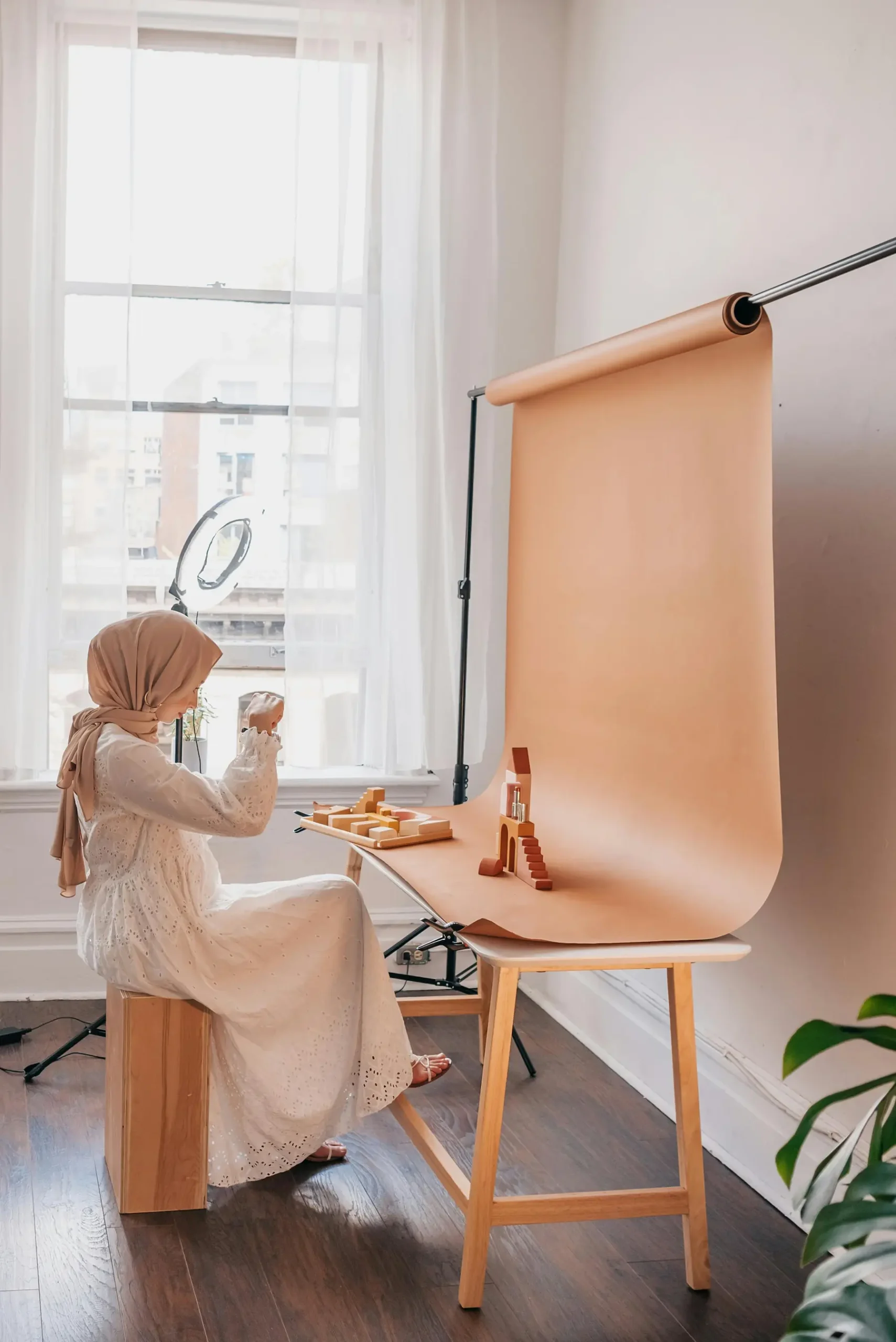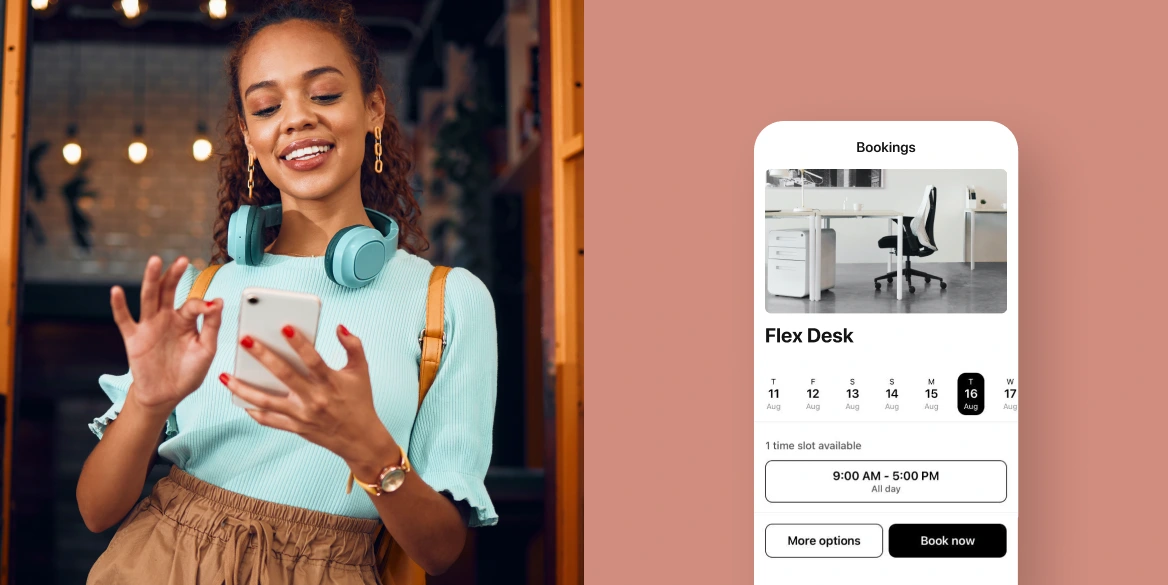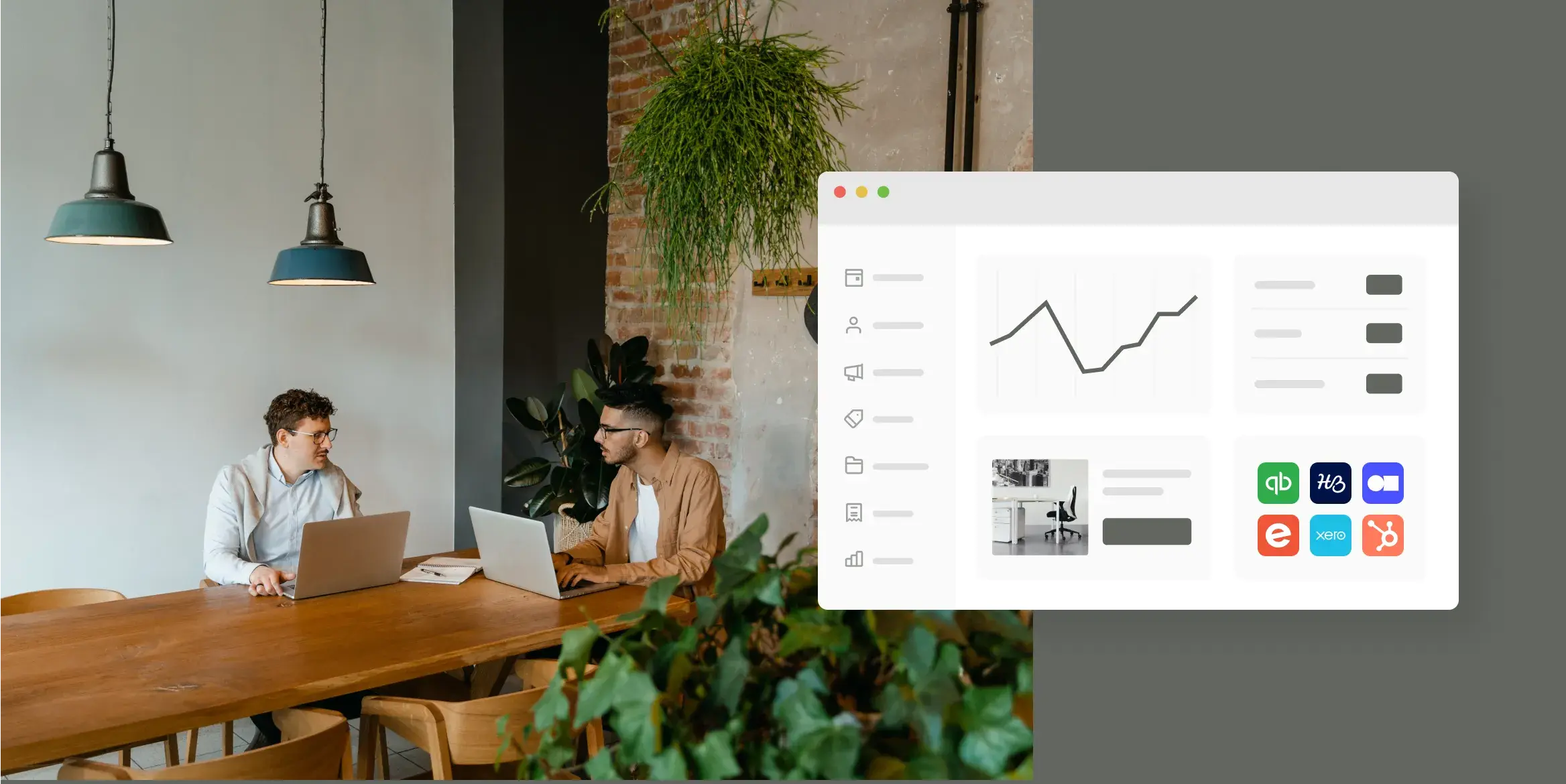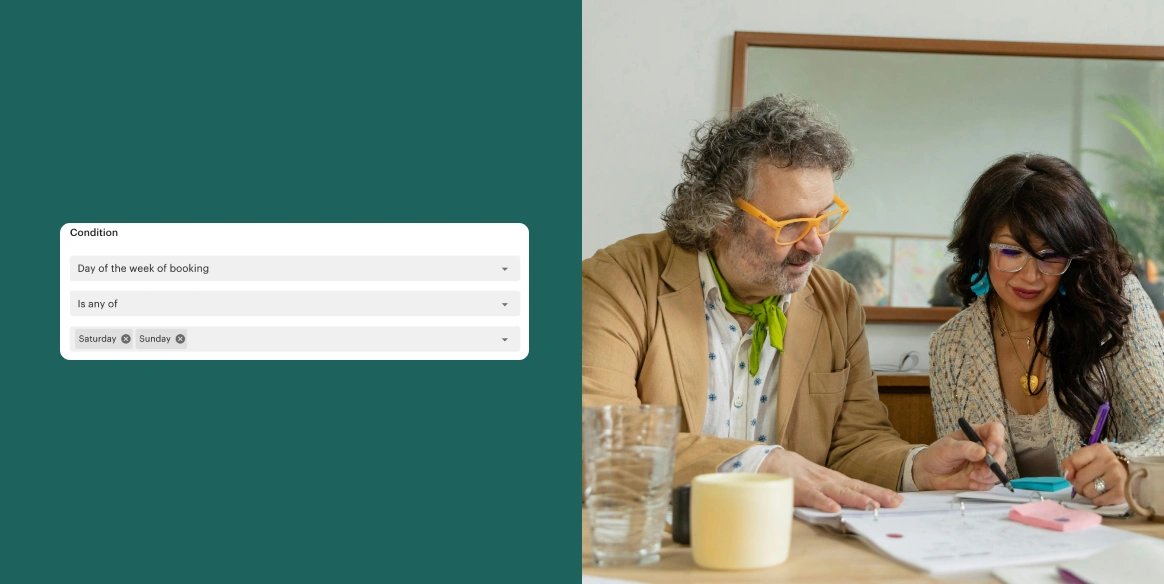TL;DR
- Creative coworking spaces are designed specifically for artists, writers, designers, and other creative professionals.
- These spaces include specialized amenities like art studios, recording booths, and maker tools.
- They build strong communities that encourage collaboration, inspiration, and growth.
In 2022, niche coworking spaces were called “the future of coworking”. In 2023, we predicted niches would be one of the top trends in coworking. In 2024, niche coworking cemented itself as a key fixture in the flex space industry.
And now, in 2025, we’re seeing this trend become far more interesting.
We’ve explored many niches within the coworking world here at Optix, from coworking for parents to the growing trend of co-warehousing.
Now it’s time to explore coworking spaces for creatives.
- What is a creative coworking space?
- Why are coworking spaces for creatives becoming more popular?
- What are the types of coworking spaces for creatives?
- How do coworking spaces benefit creatives?
- What amenities are available in a coworking space for creatives?
- Tips for starting a creative coworking space
What is a creative coworking space?
Coworking + Creative studios, also known as a creative coworking space or coworking space for creatives, is a shared workspace designed to support people in the creative industry including artists, writers, photographers, graphic designers, and podcasters.
Like many coworking businesses, creative coworking spaces tend to be most popular in large metropolitan cities or places with a large population of people in the creative industry. However, we are seeing more niche spaces popping up in rural or suburban neighborhoods as the market expands.
Why are coworking spaces for creatives becoming more popular?
Coworking spaces have been a hot spot for freelancers and solopreneurs in the creative industry since its inception back in 2005. This makes sense considering roughly 35% of creative professionals are freelance (compared to just 15% of the general population).
The emergence of coworking spaces specifically for those working in the creative industry is a more recent trend however. We’ve supported a few creative coworking space clients at Optix since 2018, but that number has grown exponentially since COVID.
In that time, we’ve also seen a shift from general coworking spaces for creatives to highly specialized coworking spaces for creatives, including coworking spaces for podcasters and coworking spaces for artists.
This growth can be attributed to the rise of the creator economy, a $155 billion industry that is expected to grow to over $500 billion by 2030. A sharp increase in creative entrepreneurs creates a need for shared spaces where these individuals can access resources and network with others in the community.
Get our free Creative Coworking Space eBook
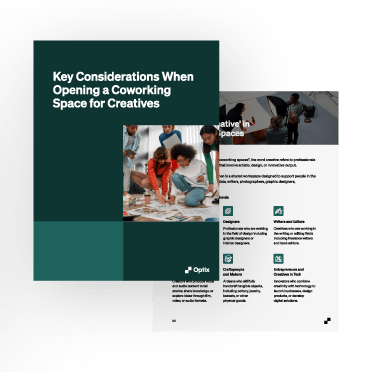
What are the types of coworking spaces for creatives?
Creative coworking spaces come in all different shapes and sizes. Here are four types or categories of creative spaces that we see most often today.
1. Coworking space for artists
Coworking spaces for artists are tailored specifically for those involved in fine art, including painters, sculptors, and illustrators.
Apart from the usual dedicated desks and meeting rooms, artist-tailored shared workspaces will typically include:
- Large studio space for physical projects
- Galleries or exhibition space
- A variety of art supplies and specialty equipment like large paper cutters, clay wheels, or a kiln
Art/Work is a Chicago-based coworking space designed specifically for artists and creatives. Along with workspace, they also offer an artist in residence, curated programming, and networking opportunities with others in the arts.
2. Coworking space for content creators
Coworking spaces for content creators are shared workspaces for creators—from YouTubers to social media influencers. These spaces typically include:
- A beautifully designed kitchen for food photography
- Photo studios with green screens and a variety of backdrops and props
- Various film and video equipment available for rent
While these spaces are still relatively new and difficult to find outside of major cities, we anticipate this trend to grow along with the creator economy in the next 3-5 years.
3. Coworking space and recording studio
Coworking + Recording Studios are shared spaces for musical artists and other auditory professionals. They’re made up of several turn-key recording studios that can be rented on-demand. Along with recording studios, these spaces also offer:
- In-house audio engineering
- Producers available for consulting
- Networking events for connecting with other creatives
- Educational programming for learning new skills
Grindhaus studios is a shared recording studio founded by Jason Jet for those in the music industry. Equipped with state of the art recording studios and in-house professional audio engineers, it was created as a place where people can work, collaborate, and get inspired to execute their creative vision. See how Jason gets it all done with Optix. →
4. Coworking space for designers
Designer-oriented coworking spaces support designers across a variety of disciplines including interior designers, graphic designers, fashion designers, and more.
They’ll typically include access to specialty design software, large open areas for working on floor plans, and of course, elite-level design throughout.
How do coworking spaces benefit creatives?
There are many benefits that creative people can get from working in a coworking space including:
- Community of like-minded individuals and ample networking opportunities
- Affordable access to art supplies and amenities
- Access to larger studio spaces
Let’s take a look at each one in more detail.
Community of like-minded individuals and ample networking opportunities
70% of freelancers have reported feeling lonely at some point in their career. Coworking spaces can help creative freelancers connect with others through:
- Coworking events like happy hours, lunch and learns, and keynote speakers
- A member Directory to connect members with one another
- A digital coworking community that can be accessed no matter where members are
With these connections come networking opportunities, the ability to learn from others, and career growth. Learn how to build community in your creative coworking space.
Automate your coworking + creative space with Optix

Affordable access to art supplies and amenities
Art supplies and other creative amenities can be pricey, from software licenses ($50-$100/mo) to paint supplies ($100-$300/mo) to podcasting equipment ($400+).
Coworking spaces can offer these amenities to rent at a fraction of the cost compared to if someone were to purchase them themselves. Not only is this an opportunity for coworking operators to create additional revenue streams, but it’s also an affordable solution for people who don’t want to spend money on pricey licenses and audio equipment for a handful of uses.
Access to larger studio spaces
Large, professional studio studio spaces are often used for:
- Creating larger art pieces
- Studio photography
- Filming for content creators
They are often rented on a monthly basis for hundreds, if not thousands of dollars a month, depending on the size of the space and the location.
Coworking spaces can offer large studio space for rent daily or hourly. Artists can use these spaces on an ad hoc basis, without feeling locked in for an extended period of time.
What amenities are available in a coworking space for creatives?
Assuming your creative coworking space already includes phone booths, great coffee, and fast WiFi here are a few more amenities you’ll want to add to your list:
- Studio space: as mentioned, access to a large studio space is great for photography, fine art projects, and more
- Business coaching and mentoring: affordable business coaching or mentoring can help support freelancers just starting out in their careers
- Access to physical art supplies: having a variety of art supplies on hand to rent or for complimentary use can be nice, depending on your demographic
- Access to digital art supplies: digital art supplies can range from software licenses to computers with processors that can handle running intensive programs, like video editing software, a huge expense for many creators
- Podcast studio: with over five million podcasts and counting, offering podcasting equipment to rent can be a great way to differentiate yourself from other spaces and capitalize on the audio trend
- Green screens and other specialty equipment: artists of all kinds require specialty equipment, from green screens to professional lighting equipment
The amenities you offer will ultimately depend on who you serve and what you need.
Tips for starting a creative coworking space
Interested in starting a community for artists and creatives? Here are four tips we recommend to all of our creative coworking space clients.
1. Know your audience
Get involved in the creative community in your area and understand what their needs are before opening your doors. The people who we see succeeding are the ones who live and breathe their target audience.
That’s why Jason, an audio engineer and musical artist, had so much success in opening Grindhaus Studios – he understood the needs of his market because he was his market.
2. Start with your business model
Offering a large studio space, a podcasting room, and a photography studio will make your space stand out. It will also require a large space.
As suggested in our how to design a coworking space article, start with your business model and your audience needs first before securing a space. If your vision is to accommodate different types of creatives, ensure you have the square footage and demand to support that.
3. Consider creative ways to support the artist community
Coworking isn’t just about space. Think how you can support your members outside of just providing access to physical space, like business mentoring, hosting networking events, or creating educational programming.
The Art/Work team curates programming that will be inspiring and helpful to their community of artists. Last Spring, they hosted a workshop to help artists and freelancers understand how to do their taxes as independent contractors.
4. Automate as many internal processes and operations as you can
Running a creative coworking space without the use of technology is setting yourself up for trouble. Consider using coworking software like Optix to help you automate recurring manual tasks and save up to 53% of your time each week.
With the help of Optix, you can:
- Automate everything from lead management to member communication
- Allow 24/7 access to your space with just a tap
- Make data-driven decisions with detailed data and analytics
Having the right technology ecosystem in place can support you in providing an exceptional user experience for your members.
Get started on your creative coworking journey
From the size of your space to the amenities that you offer, there are so many opportunities for customization when opening a coworking space. We consider it a creative act in and of itself.
At the end of the day, if you put the needs of your members first and make them the focal point of everything you do, you’ll find success. Looking for the perfect software to help you manage your coworking operations? See how Optix can help.
Frequently asked questions
A coworking space for content creators is a collaborative workspace designed specifically to meet the needs of individuals engaged in creative and digital content production. These spaces offer a professional environment equipped with specialized tools like editing suites or soundproof rooms.
Creative workspaces are environments designed to inspire and facilitate innovation among individuals engaged in the creative field. These spaces typically feature open layouts, flexible seating arrangements, and specialized facilities like brainstorming zones, multimedia equipment, and collaborative areas.
An example of a creative space is a design studio tailored for graphic designers and artists. This studio might include features such as adjustable workstations, high-resolution monitors, creative software tools, and a gallery wall for showcasing works in progress.



